112 years ago the Indian, writer, poet, and traveloguer Vaidyanath Mishra, better known by his pen name of Nagarjun, was born in the state of Bihar. The cradle of Indian civilization and birthplace of the Buddha, Bihar has produced many great writers, and Nagarjun was certainly one of them. However, his early life witnessed the loss of his mother, and a narrow avoidance of poverty via the help of relatives. Eventually, he got a scholarship to study languages. His first foray into writing was poetry in the Mithila language of Bihar. READ more about the illustrious wanderer-poet… (1911)

A wanderer by nature, Nagarjun spent a considerable amount of his time in the 1930s and the 1940s traveling across India. He also participated in many mass-awakening movements before and after independence. Between 1939 and 1942, He was jailed by the British courts for leading a farmer’s agitation in Bihar.
The subjects of his poetry are varied. Effects of both his wandering tendencies and activism are evident in his middle and later works. His poem Bādal kō Ghiratē Dēkhā hai is a kind of travelogue in verse, while Mantra Kavita, is widely considered the most accurate reflection of a whole generation’s mindset in India.
Nagarjun wrote 13 novels, 11 in Hindi and two in Maithili, and each of them centers around a socio-economic-political theme. It is impossible, reads an entry on Nagarjun at the University of Virginia, to separate Nagarjun from Bihar—it pervades his poetry and fiction and is indeed the nest to which the aging falcon returned after each short or wide gyre around India; for the Indian states are not merely the result of administrative butchery, but they are deeply individual in their history and identity.
Frustratingly, his writings remain almost entirely unpublished in English.
MORE Good News on this Day:
- Albert Einstein published, during his “Miracle Year”, the article where he introduced special relativity, which became the generally accepted physical theory regarding the relationship between space and time* (1905)
- The Meat Inspection Act and Pure Food and Drug Act were passed by Congress (1906)
- Happy 72nd birthday to Stanley Clarke, the jazz bass virtuoso who has worked with Chick Corea, Santana, Keith Richards, Quincy Jones, and Paul McCartney (1951)
- The first Corvette rolled off the Chevrolet assembly line in Flint, Michigan—and became known for speed and performance, especially the stylish ‘Stingray’ Vettes of the 1960s (1953)
- 39 American hostages were freed in Beirut from a hijacked TWA jetliner after being held for 17 days (1985)
- Spain legalized gay marriage (2005)
- A kindness scavenger event held simultaneously in five cities led volunteers in Syracuse, New York City, Denver, Seattle, and Richmond, Virginia on a mission to put a smile on a stranger’s face (2012)
- Misty Copeland became the first African-American Principal Dancer in the American Ballet Theater’s 75-year history (2015)
* A defining feature of special relativity is the replacement of the Galilean notions of Newtonian mechanics: Time and space cannot be defined separately from each other.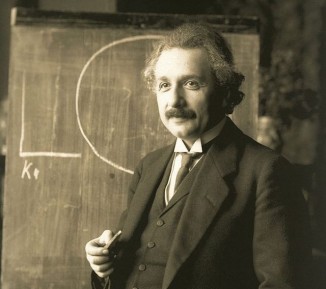
Rather space and time are interwoven into a single continuum known as spacetime. Events that occur at the same time for one observer could occur at different times for another. Rather than an invariant time interval between two events, there is an invariant spacetime interval. Combined with other laws of physics, the two postulates of special relativity are expressed in the mass–energy equivalence formula: E = mc2.
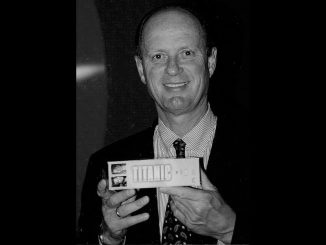
Accrediting his interest in undersea exploring with an early-age brush with Disney’s film adaptation of Twenty Thousand Leagues Under the Sea. His father exposed him to the field of undersea engineering when he got young Robert a job, ironically, at North American Aviation.
In the early morning hours of September 1, 1985, during underwater reconnaissance for the U.S. Navy, Ballard’s team discovered, and made a general search of the Titanic’s exterior, noting its condition. Most significantly, they confirmed that it had split in two, and that the stern was in far worse shape than the bow.
Finding Bismarck proved to be harder, owing to the additional 4,000 feet depth of water. Ballard later published a book about the quest, The Discovery of the Bismarck. The discovery was also documented for National Geographic in a 1989 James Cameron video Search for the Battleship Bismarck which indicated that the ship had been damaged by torpedoes and shells from British ships. The actual cause of the sinking, however, was sabotage of the underwater valves by the onboard crew.
Founder of the Ocean Exploration Trust, the Institute for Exploration, and the Center for Ocean Exploration and Archaeological Oceanography, Ballard’s mark on American history is a strong one. His research vessel, the Nautilus, is currently studying underwater volcanoes. (1942)
6 years ago, Myanmar celebrated their first international sporting championship in any sport, when mixed martial artist “The Burmese Python,” Aung La Nsang, defeated Russian Vitaly Bigdash to win the ONE Championship Middleweight World Championship, in the Myanmar capital of Yangon no less. The 32-year-old stunned fans, experts, and betters alike with an enormous upset.

52 years ago today, the Supreme Court ruled against the U.S. government, to reaffirm the rights of newspaper publishers under the First Amendment.

The landmark decision in New York Times Co. v. United States made it possible for The New York Times and The Washington Post to publish the then-classified Pentagon Papers without risk of government censorship or punishment.
President Richard Nixon had claimed executive authority to force the publishers to suspend the publication of classified information in its possession. The question before the court was whether the freedom of the press, guaranteed by the U.S. Constitution, was subordinate to a claimed need of the executive branch of government to maintain the secrecy of information. The nine judges ruled 6-3 that the First Amendment did protect the right to print the materials. What was Nixon trying to hide?
The ‘Pentagon Papers’ is a US Department of Defense history of the United States’ political and military involvement in Vietnam from 1945 to 1967. The papers were released by Daniel Ellsberg, who had worked on the study, which demonstrated, among other things, that the Johnson Administration had “systematically lied, not only to the public but also to Congress.” (1971)
And, on this day in 1864, Yosemite Valley was granted to the state of California for “public use, resort and recreation” by a decree signed by President Abraham Lincoln.
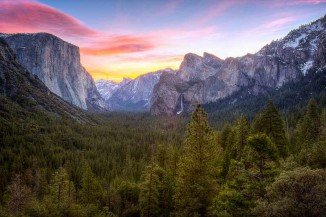
John Muir wrote: “The noble walls, sculptured into endless variety of domes and gables, spires and battlements…all a-tremble with the thunder tones of the falling water. The level bottom seemed to be dressed like a garden, sunny meadows here and there, the river of Mercy sweeping in majesty through the midst of them.” (Photo by SpreadTheMagic, CC license)
On this day 68 years ago, The Johnny Carson Show debuted on CBS television. The prime-time variety show was a traditional potpourri of monologue, comedy, music, dance, and skits. The series was short-lived, but planted the seeds for sketches he would later perform on The Tonight Show, such as “The Mighty Carson Art Players”.
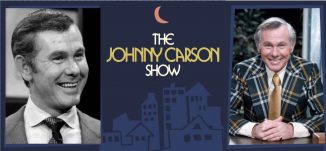
7 years later, he was tapped by NBC to host The Tonight Show Starring Johnny Carson where he reigned for 30 years as the undisputed king of late-night television.
On April 1, it began streaming for the first time ever with the launch of The Johnny Carson Show on Shout! Factory TV, with collections of episodes from Carson’s epic run, with groupings entitled The Best of Carnac the Magnificent, The Best of George Carlin, and Animal Antics with Joan Embery and Jim Fowler. WATCH a highlight reel from the Tonight Show… (1955)
On this day 105 years ago, the jazz-pop singer and actress Lena Horne was born. The first black performer to be signed to a long-term contract by a major Hollywood studio, her career spanned 70 years on stage, screen and television.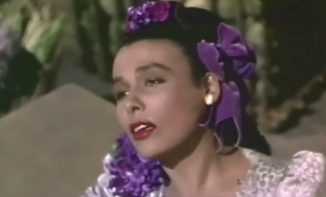
Born in Brooklyn, she dropped out of school but found musical mentors after moving in with her estranged father at age 18. Horne recorded popular albums and performed into her 80s, including a one-woman show at 62, called “Lena Horne: The Lady and Her Music,” which ran for more than three hundred performances on Broadway. The Grammy award winner also found fulfillment joining the 1960s Civil Rights Movement, 20 years after secretly marrying a white composer in the 1940s. Remembered also as a co-star in the Broadway play, The Wiz, Horne died of congestive heart failure at the age of 92. WATCH a bio broadcast on PBS after her death… (1917)
SHARE the Milestones, Memories, and Music…





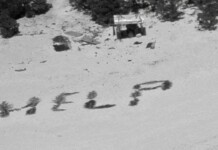















[…] post Good News in History, June 30 appeared first on The Good News […]